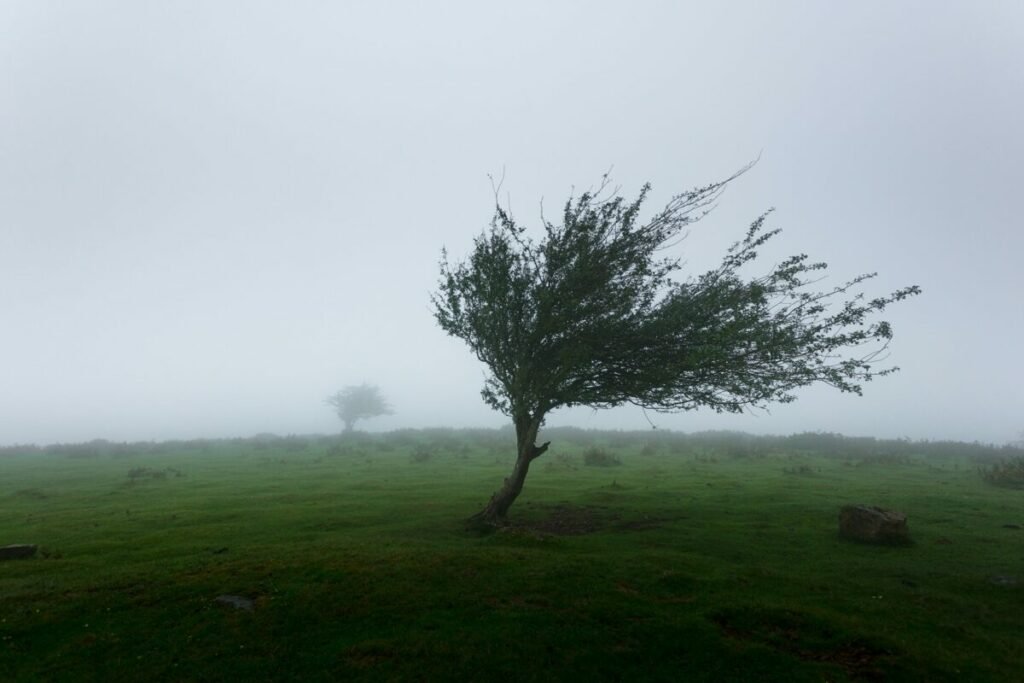
As a child, when did you first become aware of air? It was probably as its manifestation in the mysterious force of wind. Indeed, we all have forgotten our first gasp at birth.
I thought of this question as I drove through a dead-still morning when clouds brushed the top of my pick-up. The air was thick with moisture; not really raining, but enough water accumulated on the windshield to necessitate turning on the wipers every few miles. I thought it would be nice for the wind to sweep away this dark sniffling day.
My first memory of wind was perhaps at age four or five when my father fabricated (with mother’s sewing skills) a box kite of pine struts and muslin ‘sails’ for my older brother.
Dad took Henry and me to farmland outside Schenectady, N.Y. and away from telephone wires, trees, and neighbors’ roof-mounted TV aerials. The autumn wind across the meadow was cold, but we were excited to have the kite lift easily from the ground. I have no recollection of how long the kite was aloft, but distinctly remember it flying down the field, getting smaller and smaller, falling out of the sky to crash in withered weeds. I assume now that the cotton string was no match for the strength of the wind. All three of us began running to save ‘our’ kite. I think a strut or two was snapped much to our disappointment, but Dad, ever a calm man, piled us into the gray Plymouth to return home. All the way he reassured us that the kite could be fixed. Our father’s sons, we did not exaggerate the outing’s outcome to our mother. I am sure Dad fixed the kite and we flew it many times thereafter.
As a youngster, I remember snow drifts that nearly covered our Renault, but wind didn’t have a personal meaning until crewing a small sailboat on Long Island Sound. Though I was not a good sailor, I appreciated the knowledge the more experienced kids had. I did, of course, know that my bicycle tire needed to be pumped up until it was hard. I knew that the Cherokee used blow-darts to kill small game, that one way to irk my mother was to blow through a straw making burbbling noises in the glass of milk. And every youngster likes the pseudo-panic of the rush of wind preceding a summer thunderstorm.
It was years before I knew much about useful wind facts: the Beaufort Scale and the anemometer, isobars denoting atmospheric pressure, the jet stream, derecho, and tornado. Older, as I practiced insight meditation, the attention to the breath was what mattered. You can’t get more fundamental, personal, than mindfulness of the breath.
And feeling that I should be more complete; harnessing the wind is like the early use of fire in its unknown origins. I’ve always been fascinated by the Tower of the Winds in Athens, an eight sided ‘weather station and time piece,’ each side having a relief sculpture depicting one of the eight (directional) winds. Though windmills have been around for centuries, wind power in a different context is an important part of the discussion of alternative energy sources these days. I am sure there are many books on the topic of air; one is Steven Johnson’s The Invention of Air: A Story of Science, Faith, Revolution, and the Birth of America which is about Joseph Priestley, discoverer of oxygen.
Bringing us forward quickly, pneumatic tools, now ubiquitous in the construction trades, were invented in the latter nineteenth century (the pneumatic drill in 1871, the pneumatic hammer in 1890) nearly two hundred years after the discovery of steam power.
The wind, like other elemental actions of nature, is metaphored in many ways, but primarily as a broom might sweep away debris, the old, cleansing what may be corrupted. The phrase “winds of change” is pretty close to cliché, as is the notion of reading the political winds, especially these days when there are many cultural ‘cross winds.”
Though breezes are often considered in a favorable light, (think Seals and Crofts’ singing “Summer breeze makes me feel fine”), winds are taken in a more serious way: forest fires create their own wind, for instance and we know about the increasing number and destruction of hurricanes and tornadoes. The exception to this notion might be the association of birds with the air; the ‘wind’ buoys birds and thus lovers (doves) as in Bette Midler’s song “Wind Beneath my Wings.” Or the associated soar of aspiration. References to wind in literature are everywhere: Hermon Wouk’s Winds of War, Shelly’s “Ode to the West Wind,” Margaret Mitchell’s “Gone With the Wind,” Shakespeare’s The Tempest, and so on.
Even now I remember singing along with the Kingston Trio “out where those chilly winds don’t blow” or Ian and Sylvia’s “Four strong winds that blow lonely” and of course, Dylan’s “the answer, my friend, is blowing in the wind.” If you Google “Wind in song titles or lyrics,” you will be overwhelmed by the number: “Chicago Wind” by Merle Haggard, “Windy Trees” by Jost Esser, “Break like the Wind” by Spinal Tap, “Candle in the Wind” by Elton John, and dozens of every musical genre. I don’t know why songs come immediately to mind; maybe singing is in reality wind. And around us the wind sings in the trees or wire fences, in an Aeolian harp (so named for the Greek god of wind, Aeolis) or wind chime, or whistling through storm windows whose gaskets are worn out. One Buddhist tenet is that nothing is permanent, all phenomena is subject to change. Of the elements earth, water, fire and air, air seems to change the most and in doing so teaches us valuable lessons.

Share this post with your friends.

